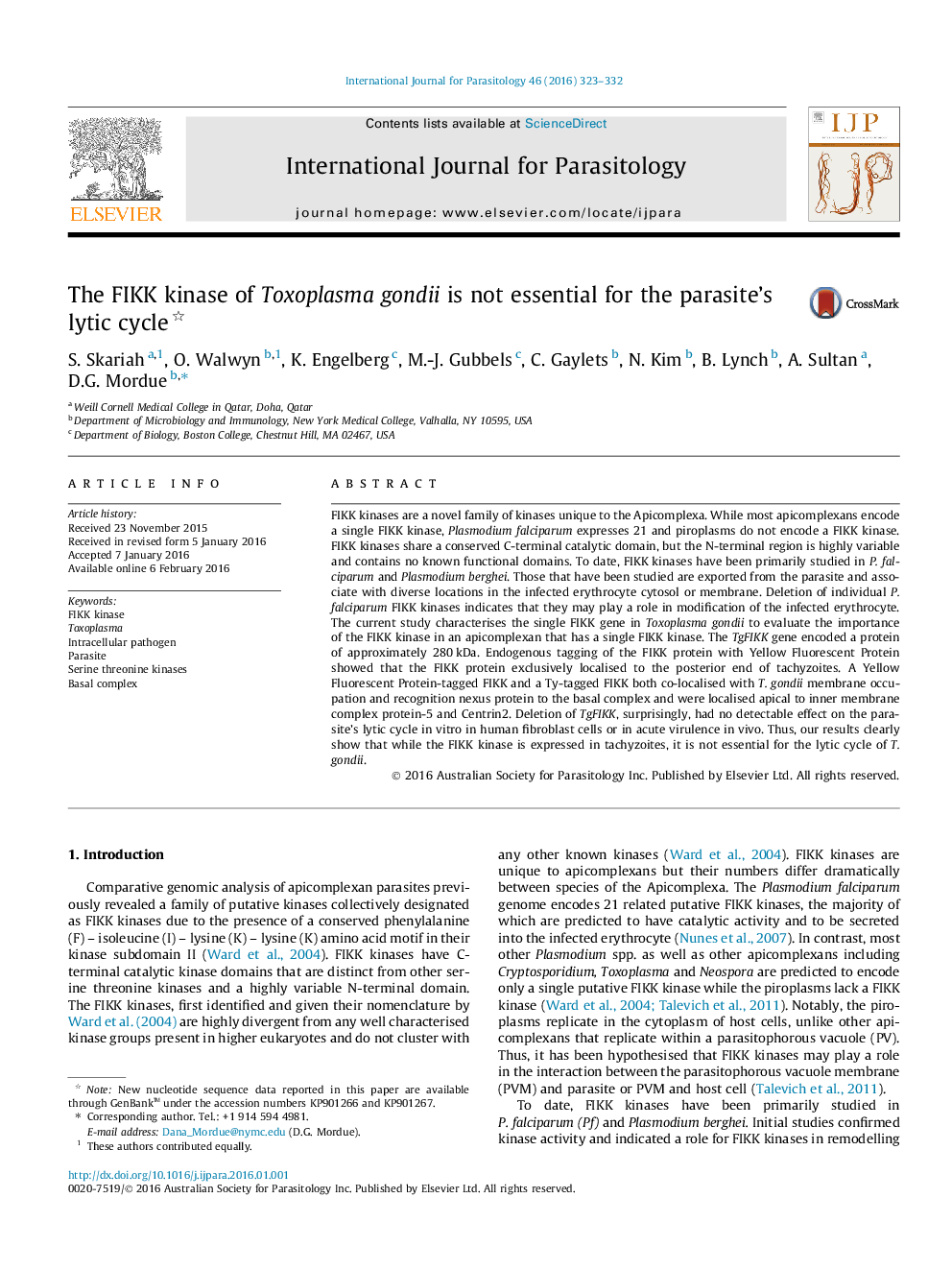| Article ID | Journal | Published Year | Pages | File Type |
|---|---|---|---|---|
| 2435972 | International Journal for Parasitology | 2016 | 10 Pages |
•The Toxoplasma FIKK kinase exclusively localises to the basal complex.•The FIKK kinase is expressed throughout the parasite’s lytic cycle.•The FIKK kinase is not required for the parasite’s lytic cycle in vitro.•The FIKK kinase is not required for acute infection in a mouse model.
FIKK kinases are a novel family of kinases unique to the Apicomplexa. While most apicomplexans encode a single FIKK kinase, Plasmodium falciparum expresses 21 and piroplasms do not encode a FIKK kinase. FIKK kinases share a conserved C-terminal catalytic domain, but the N-terminal region is highly variable and contains no known functional domains. To date, FIKK kinases have been primarily studied in P. falciparum and Plasmodium berghei. Those that have been studied are exported from the parasite and associate with diverse locations in the infected erythrocyte cytosol or membrane. Deletion of individual P. falciparum FIKK kinases indicates that they may play a role in modification of the infected erythrocyte. The current study characterises the single FIKK gene in Toxoplasma gondii to evaluate the importance of the FIKK kinase in an apicomplexan that has a single FIKK kinase. The TgFIKK gene encoded a protein of approximately 280 kDa. Endogenous tagging of the FIKK protein with Yellow Fluorescent Protein showed that the FIKK protein exclusively localised to the posterior end of tachyzoites. A Yellow Fluorescent Protein-tagged FIKK and a Ty-tagged FIKK both co-localised with T. gondii membrane occupation and recognition nexus protein to the basal complex and were localised apical to inner membrane complex protein-5 and Centrin2. Deletion of TgFIKK, surprisingly, had no detectable effect on the parasite’s lytic cycle in vitro in human fibroblast cells or in acute virulence in vivo. Thus, our results clearly show that while the FIKK kinase is expressed in tachyzoites, it is not essential for the lytic cycle of T. gondii.
Graphical abstractFigure optionsDownload full-size imageDownload high-quality image (32 K)Download as PowerPoint slide
